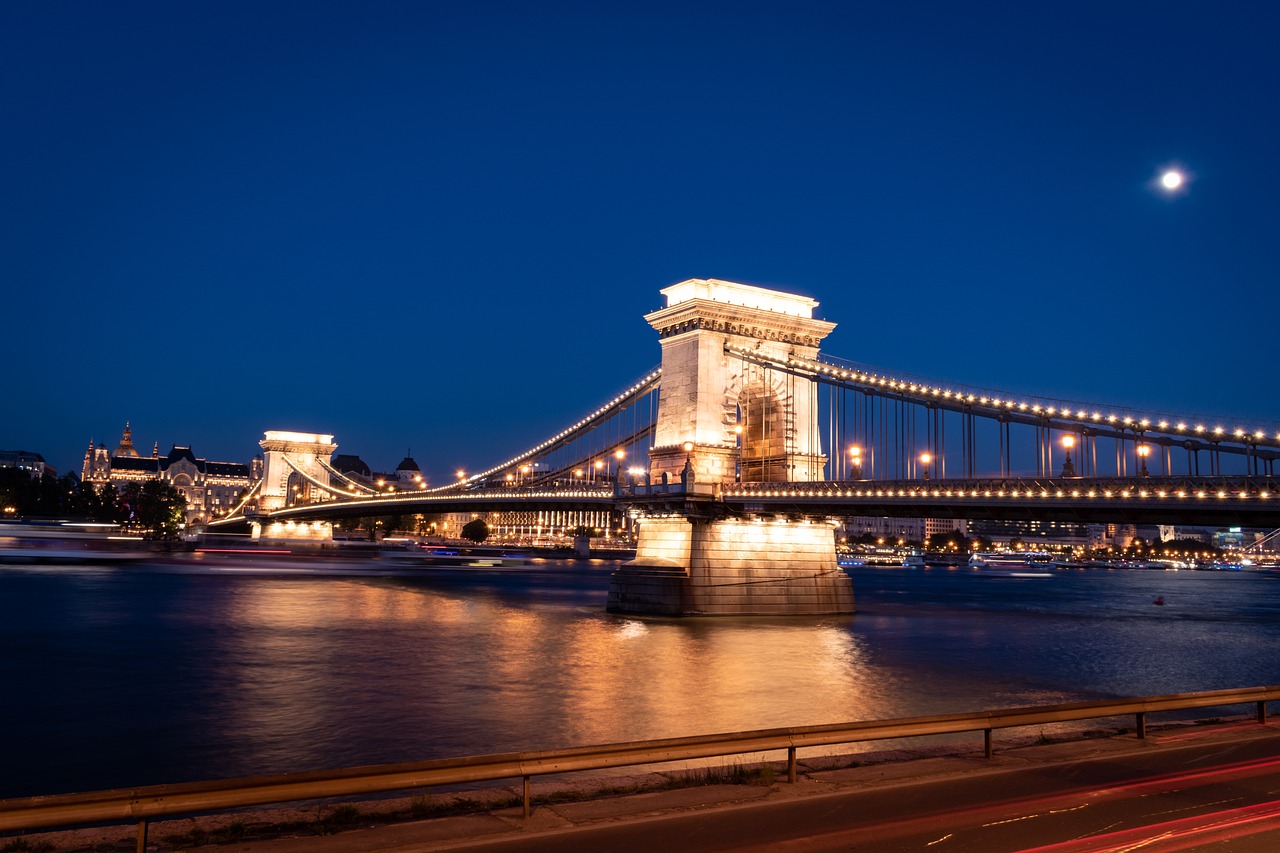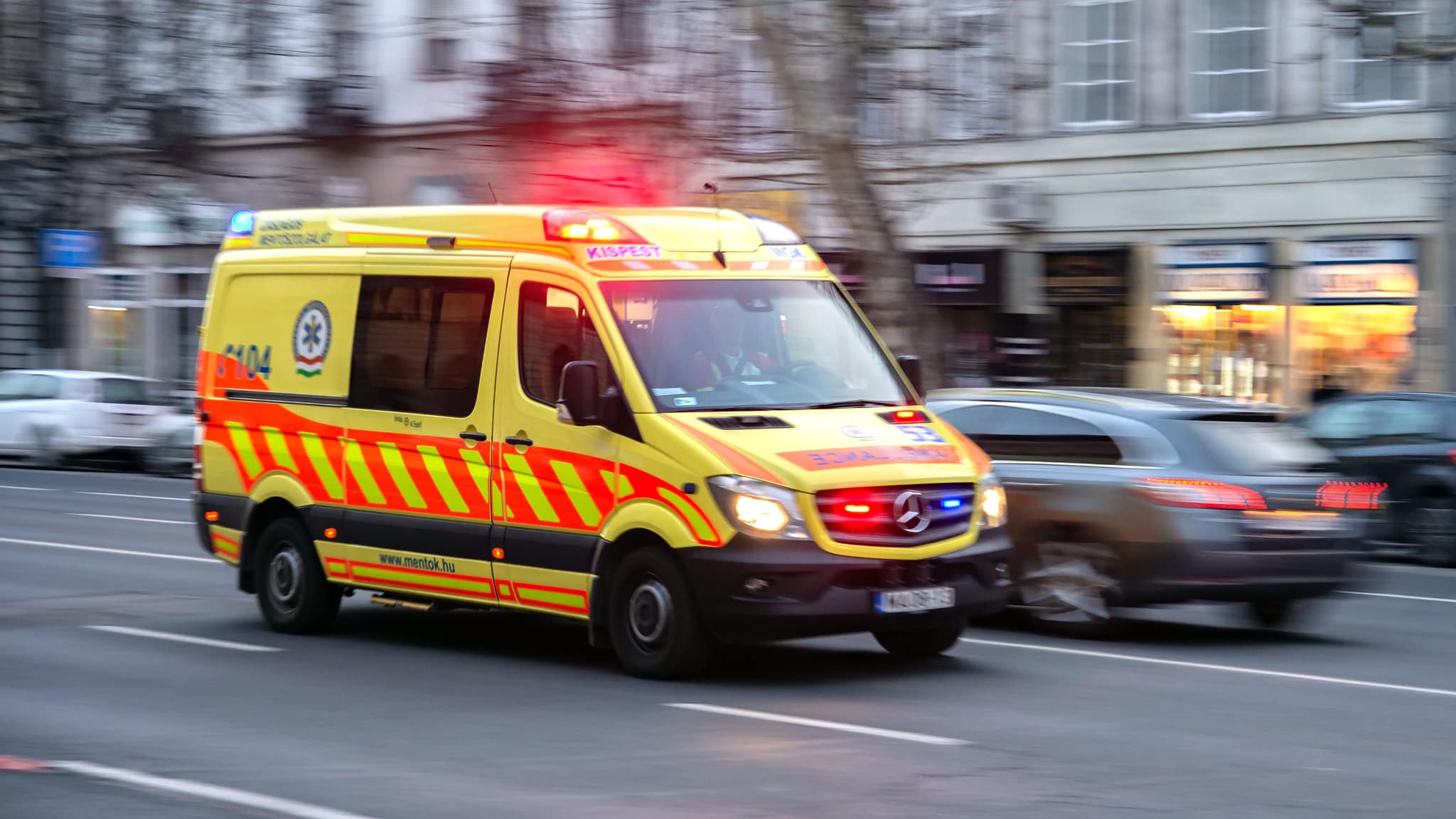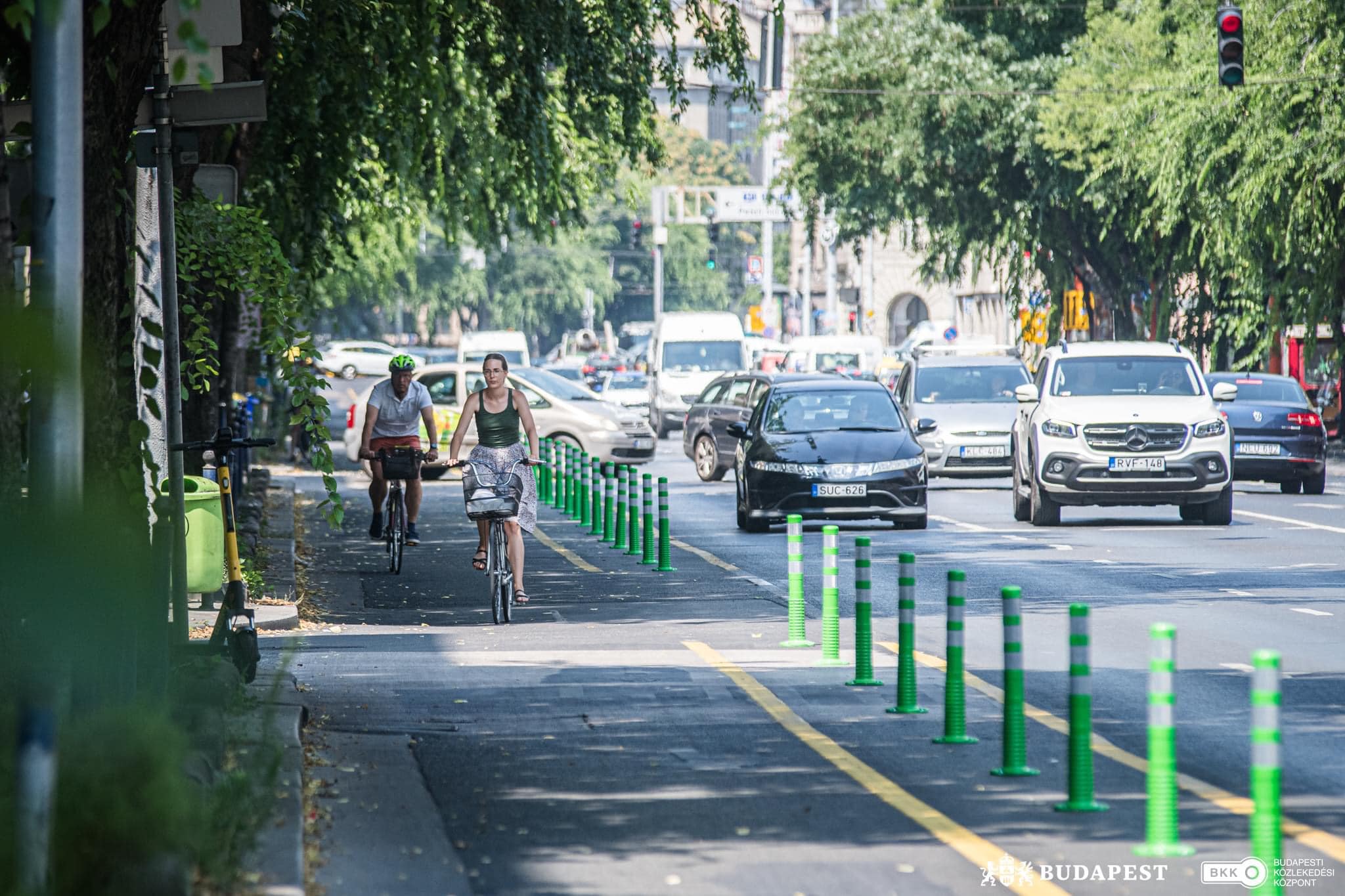
In a similar vein to the national consultation, the capital's administration recently came up with the idea of the 'Budapest Residents' Meeting', which only nine percent of eligible Budapest voters filled out.Continue reading

The capital’s administration has recently made important changes to the bike lanes on Üllői and Váci roads, some of Budapest’s busiest roads. The newly created narrow cycle lane, bordered by cones, is causing serious problems for ambulances, which used to fit in the roadside lane but now cannot, and motorists cannot pull over to make room for ambulances, reports Magyar Nemzet.
The National Ambulance Service wrote on its Facebook page that while ambulances are promoting safe cycling in the capital, the newly created bike lanes are making it much more difficult for them to get around. The lanes, made up of previous bus lanes, are too narrow for ambulances to pass safely, and the poles can even make parking difficult. The emergency services are trying to adapt to the new situation, but it is not always easy and they ask for the understanding of road users.
The bus and cycle lane on Üllői road was redesigned in July. Since the M3 metro line is now running on the entire line, there is no need for buses, hence the bus lane has been eliminated. In its place, the city leadership has separated the cycle lane, causing congestion on the affected stretch, and there is no place for motorists to pull over to give way to the ambulance.
As for the three-and-a-half-meter cycle lane, many people do not understand why cyclists need such a wide lane on a road with heavy car traffic.
To make traffic completely impossible, the cycle lane has been lined with green, flexible plastic piles, making it rather difficult for ambulances, traders or broken-down cars to pull over.
In addition, there is a whole clinical block along Üllői road, making the situation particularly problematic for ambulances.

The bike lane on Üllői road. Photo: Facebook/BKK – Budapesti Közlekedési Központ
The National Ambulance Service’s displeasure was soon followed by a reaction from Samu Balogh, the chief of staff to Budapest Mayor Gergely Karácsony. He pointed out that there used to be a parking lane where the ambulances say there is an annoying bike lane now, and it is interesting that this did not bother the ambulances before, and he hopes it is not a political campaign. To find a solution to the problems together, he asked his colleagues to contact the ambulance service.
Moreover, the staff of a political news portal Index decided to visit the scene and measure the width of the bike lane on Üllői road. According to their measurements, the lane was narrow but just big enough for the ambulance.
Pál Győrfi, spokesman for the ambulance service, told Mandiner that he would like to end the press messaging and turn it into a constructive, professional discussion. To this end, he said, preparations are underway to bring together representatives of Budapest Public Road and the ambulance service’s experienced ambulance drivers. Pál Győrfi hopes that their arguments will be heard and, if necessary, they are ready to go to the sites together. They have a thousand calls in 24 hours in the capital, passing the ominous Üllői and Váci roads every day, hence they are aware of the situation.
Either we did not explain it clearly, or chief of staff Samu Balogh did not understand that the question is not whether an ambulance can somehow fit between the poles and the pavement, but whether the lost lane of traffic will cause difficulties for the fast and continuous movement of vehicles,”
the ambulance service spokesman highlighted. In recent days, it has become clear that it is causing problems, and more serious issues are expected from September when school starts, he continued. According to Pál Győrfi, it is difficult for an ambulance to get between the poles and it is not viable for it to maneuver its way in there with a y-turn and then drive continuously at relatively high speed.
The other problem is that the poles mean that other cars cannot pull over when the ambulance with its siren is coming up”
he pointed out. Pál Győrfi added that when one thinks about the dynamics of traffic, it is not difficult to see that it is good for a vehicle using a distinctive sign to be able to move as fast and as steadily as possible. This is made much more challenging by this traffic management solution, he argued.
Featured photo via Facebook/Országos Mentőszolgálat